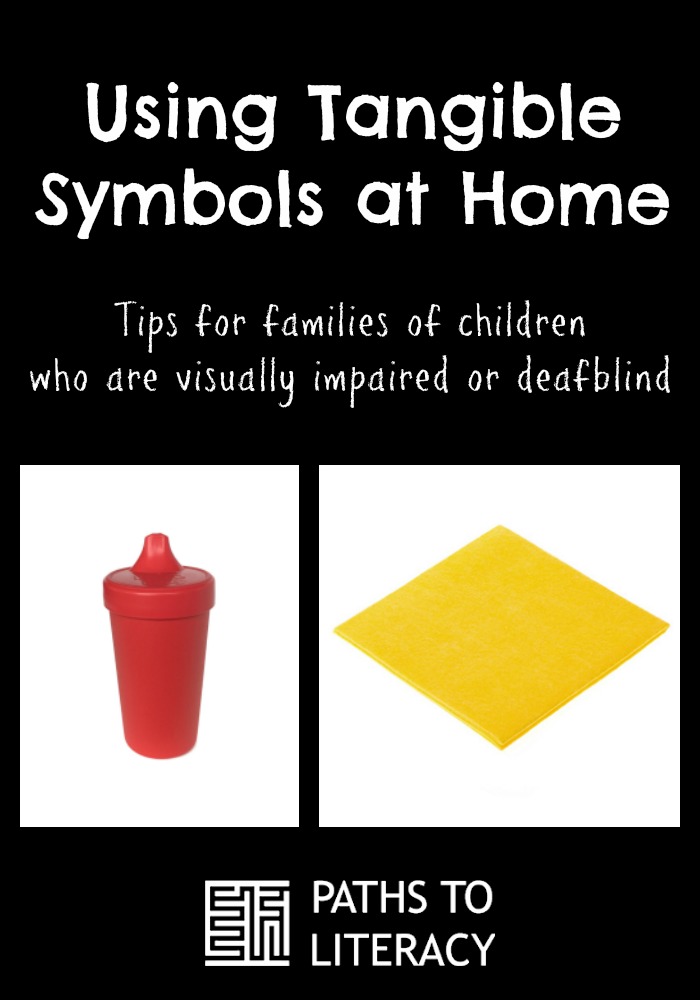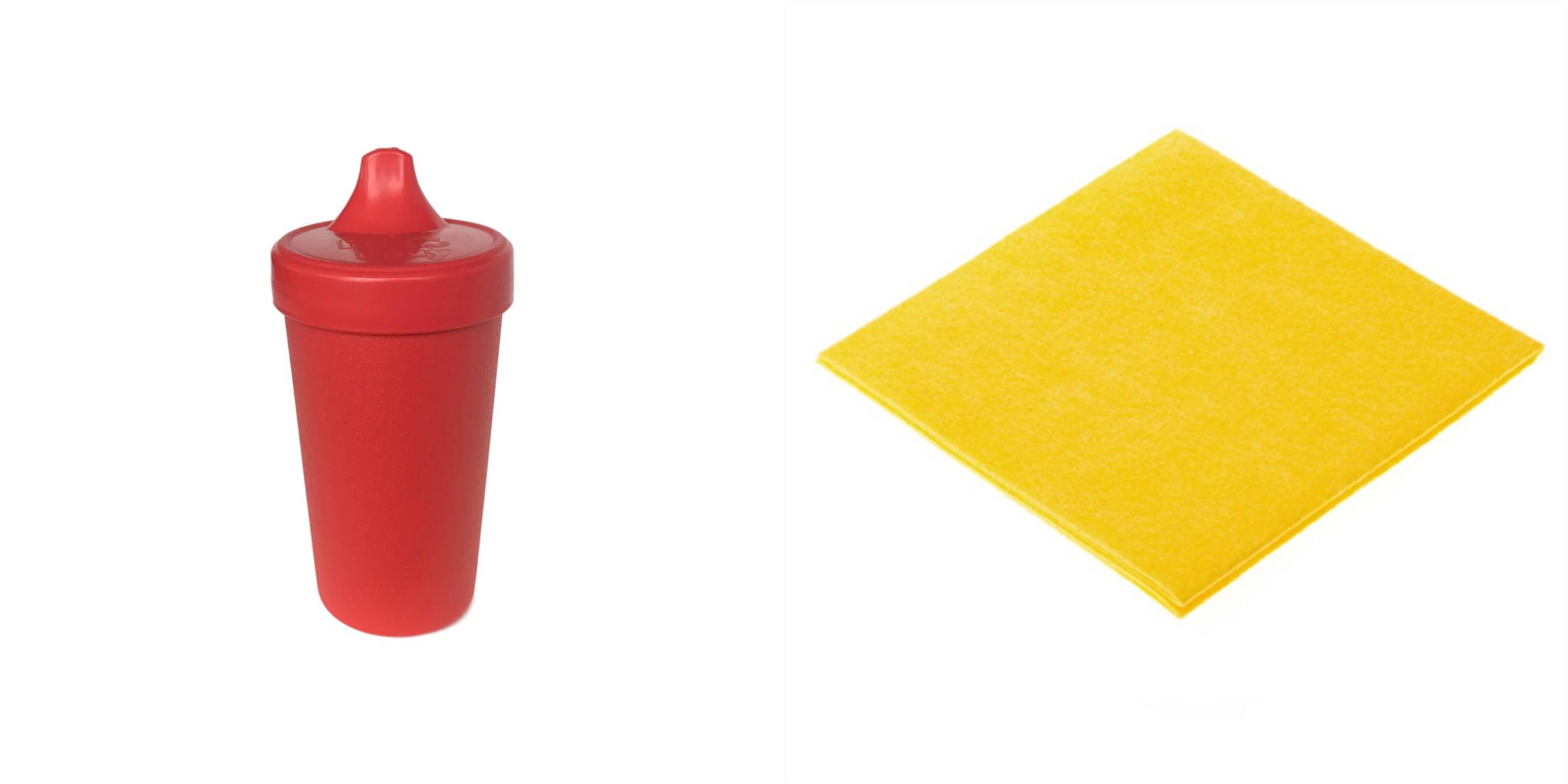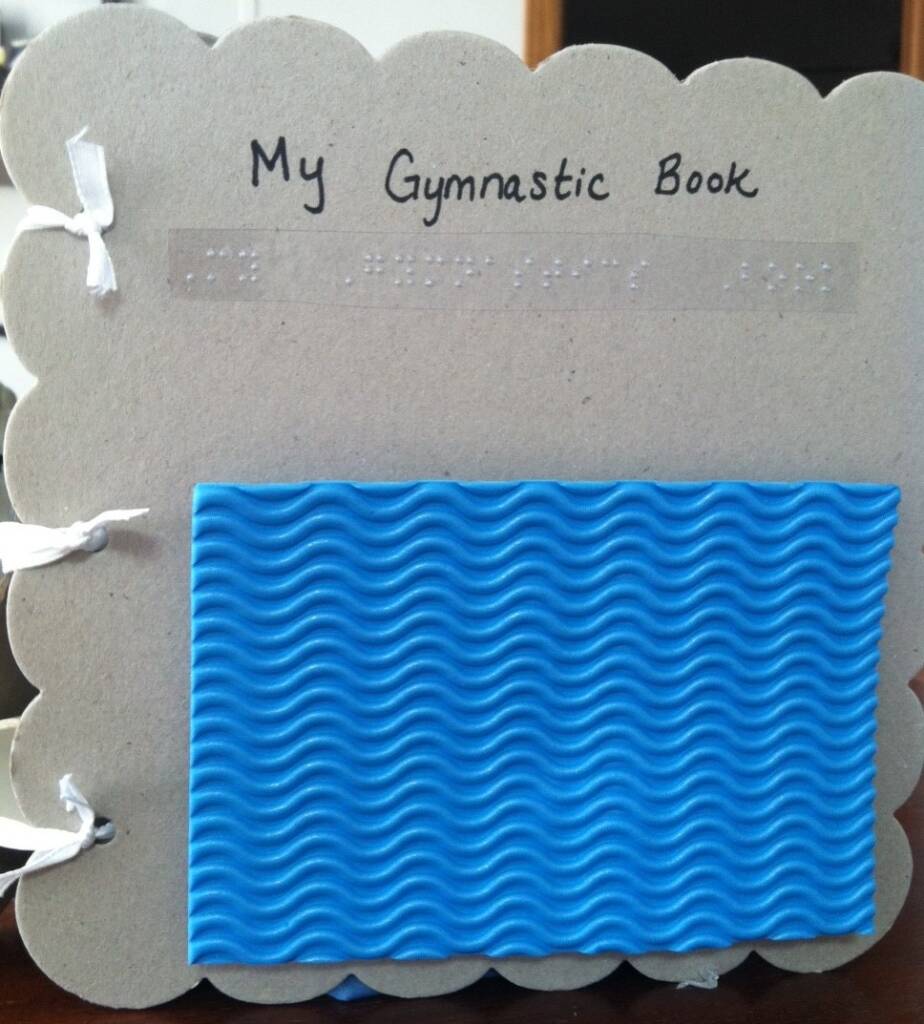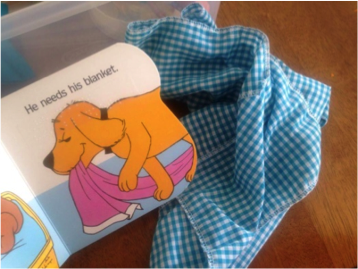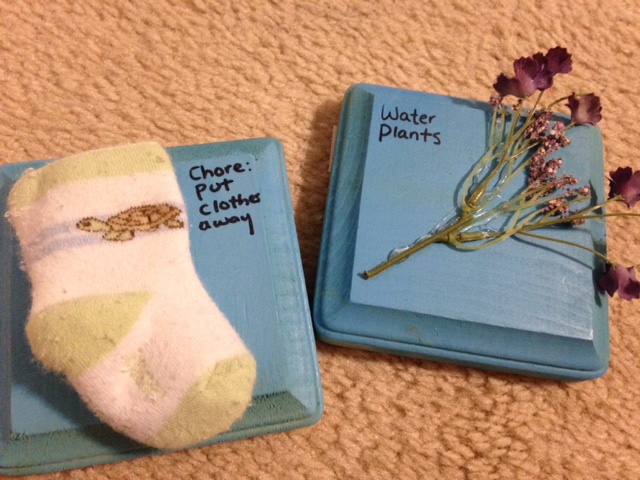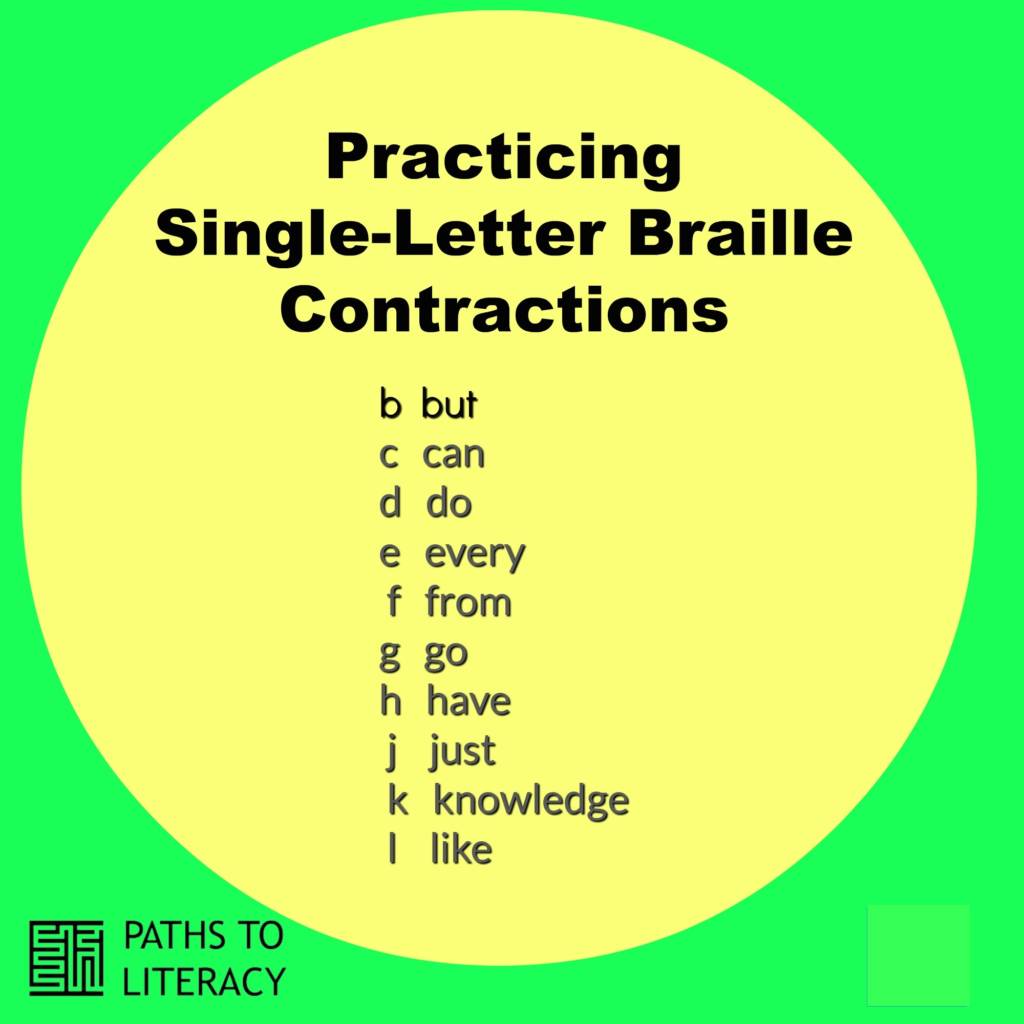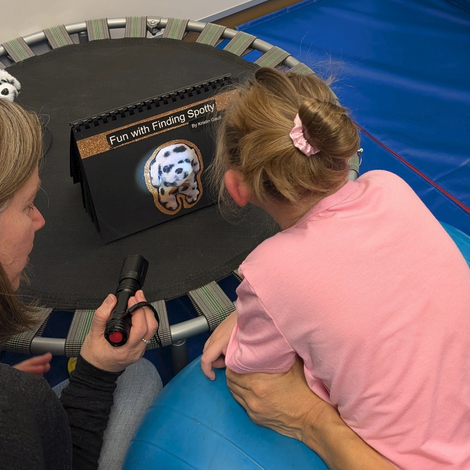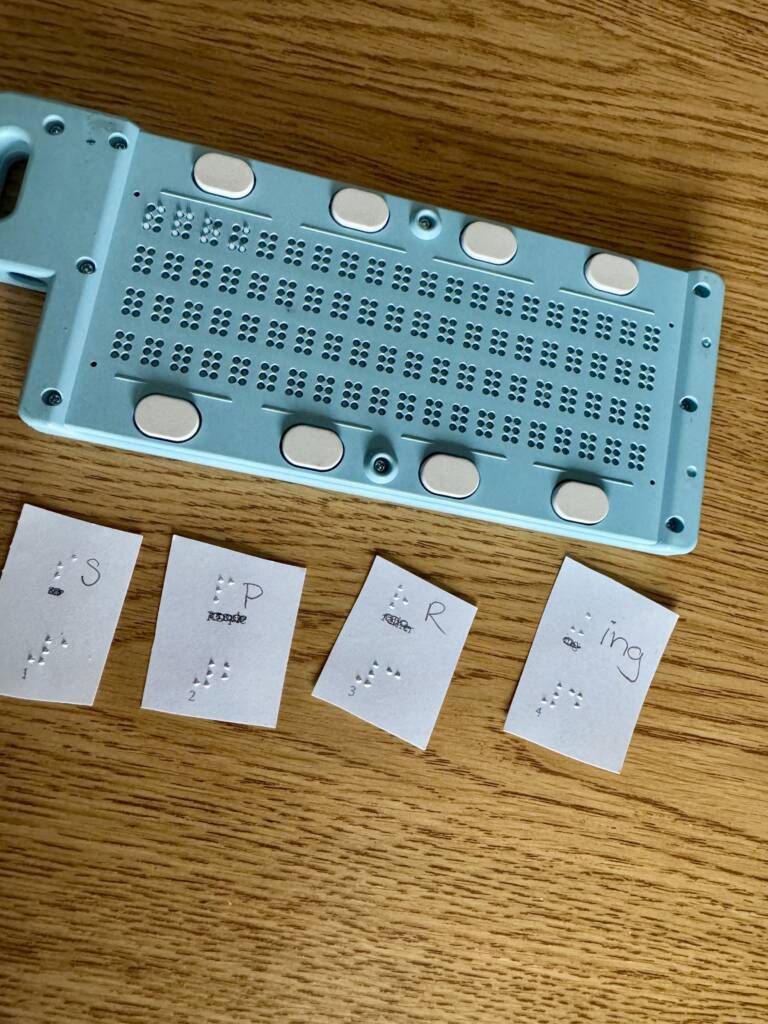I am the mother of an eight-year-old boy who is just finishing up second grade. He is a fun-loving and social little guy. He is deafblind and his first language is American Sign Language and he is a braille reader. Recently I was asked by another parent how we used tangible object symbols at our home. That was such a great question that I couldn’t just answer in a few simple words, so I decided to share our journey with “Object Symbols”.
Liam’s history
(I’ll try to keep it brief:)
Liam was born with typical vision and hearing. He became sick with meningitis when he was 2 1/2 years old, which resulted in him becoming deafblind (completely deaf and he has light perception, with some ability to see movement). Before he became deafblind he had a large vocabulary and talked well. When we first brought him home we knew right away that he needed a new way to communicate. He was still able to talk to us, but couldn’t hear us talk back to him anymore. Eventually he quit speaking out loud, as he wasn’t receiving any auditory input. It was a very difficult time for him and for us. Object symbols were our first step towards communicating with him, with the end goal eventually to be using American Sign Language (ASL) and braille. The objects gave us hope and a hands-on way to communicate with our son again.
Liam’s Stages of Object Symbols and Cues
Beginning stage: Using real objects, from actual activities to learn to anticipate what will happen next
We began this stage when Liam was approximately 2 and 1/2 years old until he was about 3 years. This could be done earlier, but this was the age when he first lost his vision and hearing.
Very early on we used all kinds of real-life, real-sized objects as symbols for routines. They would cue Liam as to what was going on. For example:
I would give him my car keys when it was time to get him in the car. I would give him a plastic spoon (the same one every time!) when it was meal time. When it was time for a diaper change, I would give him a diaper. I would store the objects in a bag or box in a convenient location. A bag was handy for traveling outside the house. Below are some examples of object cues we would use:
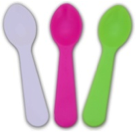 spoon: used to indicate meal time
spoon: used to indicate meal time- diaper: used to indicate diaper changing
- washcloth: used to indicate bath time
- keys: used to indicate travel by car
- cup: used to offer a drink
- small inner tube pool floaty: used to indicate swimming pool time!
- small rocks: used to indicate that we were going to a playground (our playground had small rocks on the ground)
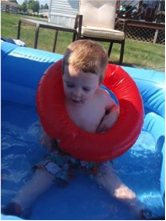
Using real objects to make choices
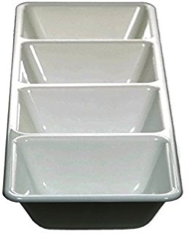
When I wanted to offer Liam a choice I would give him a try similar to the one below and put objects in it were he could choose the activity. The tray I used was found at the dollar store. Examples of items I would put in the choice tray:
- puzzle piece
- small book
- play-doh cup
- small toy
Those objects represented the following activities he could choose from: puzzle time, book reading time, play-doh time or toy box time.
Using real objects at school to know what will happen next
They used the same type of system at school for his calendar. They used real life objects to show when activities would happen. The only difference is that it was set up as a calendar with a finished box at the end, so that Liam could move the objects to the finished box as the tasks were completed.
Example of objects used in the school calendar:
- rocks: used to indicate time to play outside
- paper cup: used to indicate snack time
- paper towel: used to indicate potty time
Transitional stage: Moving from real objects to partial objects, abstract symbols and braille
From the time Liam was approximately 3-7 years old, we started to make the transition from real objects to more abstract ones, including:
- Partial real-life objects attached to boards (easier to transport and store)
- Paired with braille
- Abstract object symbols (This came as he got older and understood more, so we could have a conversation with him about what the symbols represented.)
Objects really helped with language development! Once Liam realized that the object symbols meant something and had power (power for him to make choices, power to express his needs, and power for myself as a parent to inform Liam of events) we were able to make them slightly more abstract and use partial objects. We are also able to pair braille with the objects. Even though he wasn’t reading braille at the earlier parts of this stage, his object symbols were a perfect opportunity to give him exposure to braille and begin work on his pre-braille skills!
This experience book is an example of partial objects being paired with braille. Using them to share a recent experience or preferred activity was a very motivating and meaningful way for him to develop an understanding of the symbols, the signs, and the braille.
Object symbols at home:
We used objects at home to introduce new words as Liam continued to learn his new language, American Sign Language. We would show him the symbol and pair it with braille and pair it with the sign for the word as well. I used object symbols for job charts, grocery lists, cooking recipes and I added object symbols onto his books as well. We also used object symbols to identify his friends and classmates. Object symbols were a big part of our life! They are a big part of supporting a pre-braille reader, and also a great way to support language development for a child who is deafblind.
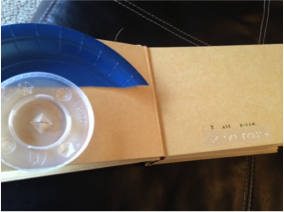
Object symbols at school:
This is an example of a calendar at school I made for Liam that used object symbols to represent special activities that happen on the given day. After discussion and practice, Liam was able to “read the symbols” and knew very well what they represented. Of course we paired braille with the object symbols as well.
Partial real-life objects:
- Small cardboard piece is from the books he reads during library
- The blue rubber circle is the actual piece of a rubber ball used during gym time.
Abstract object symbol:
- The small mallet represented music class because he was able to play the xylophone in music class.
- Big braille letter G to represent “Grandma”
Desk Schedule:
Here is another example of how we used object symbols at school for his daily schedule.
“Use only as needed” stage
Now Liam is a braille reader and he is been in this stage from approximately age 7-8 years. His desk schedule no longer includes object symbols, as he transitioned out of that stage. His schedule and calendar include braille only. It is still very important for all children with vision impairments to learn by doing, feeling, and experiencing. Liam still does use real-life obects and abstract object symbols when learning at home and school. The most recent example that came to mind was making a smoothie at school. He was able to read about smoothies, create a smoothie using the real-life objects, and then write about the experience.
